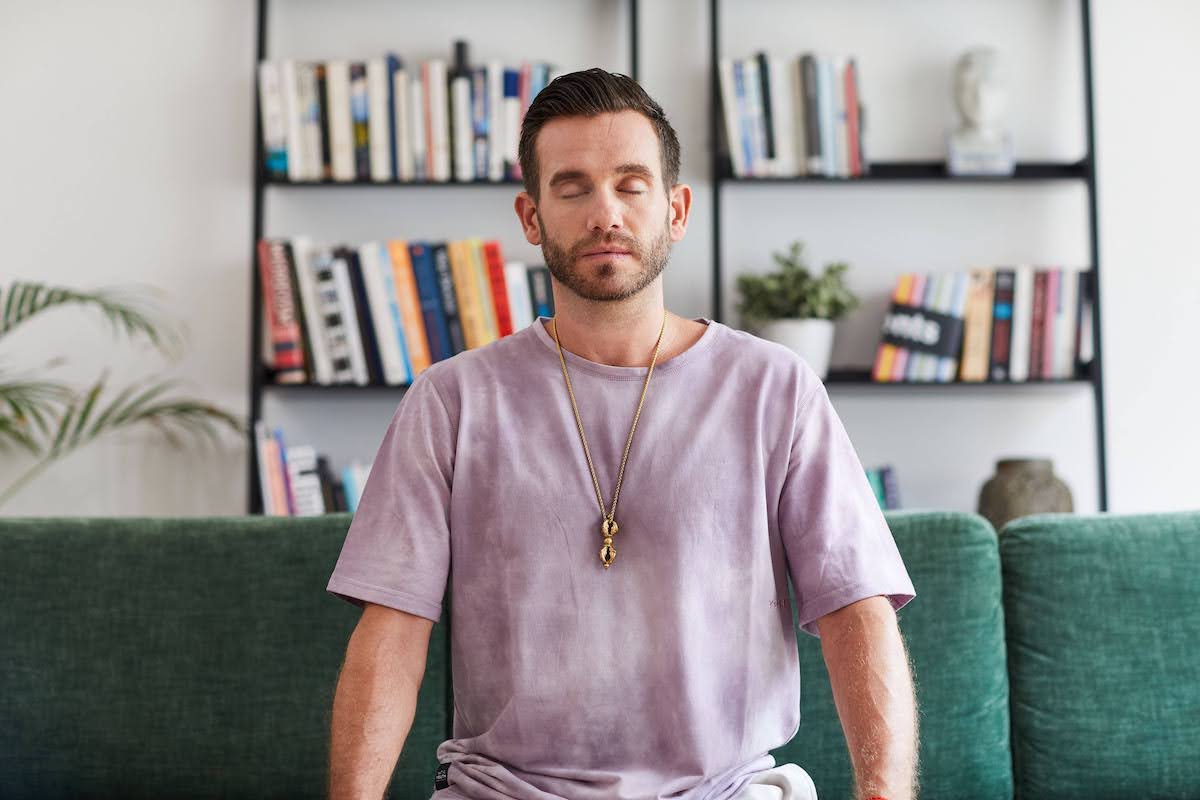In the Tibetan Buddhist tradition, lucid dreaming is seen as a type of meditation practice in which the dreamer becomes aware of the dream state. This awareness is used to gain insight into the nature of the mind and work towards enlightenment.
In the modern world, this practice has also been well-studied as a powerful tool for spiritual growth and self-healing. However, the question remains: Is lucid dreaming dangerous?
Granted, there are many misconceptions about lucid dreaming. And as with any activity that involves altered states of consciousness, there are certain precautions that should be taken. Let’s explore how to practice it safely.
What happens when you lucid dream?
When you have a lucid dream, you are aware that you are dreaming. It occurs during the REM state of sleep, and in this state, you’re able to become consciously aware of your dreams.
With this conscious awareness, you can influence what happens in your dream and have some control over your dream reality. This is why lucid dreaming can be used as a powerful tool for self-healing, problem-solving, and spiritual growth.
Apart from fun things like flying, lucid dreaming can heal your mind from the inside out. — @charliemorley1 Share on X
4 possible dangers of lucid dreaming
There are no inherent dangers to lucid dreaming, as it is a natural and normal part of the human sleep cycle. However, there are a few things to keep in mind when practicing lucid dreaming:
1. Sleep deprivation
Since lucid dreaming happens during REM (rapid eye movement) sleep, the body and mind are able to get the rest they need and continue through their normal processes.
Occasionally, lucid dreaming may feel like a tiring experience. Because your dreams can be so vivid, you might have trouble going back to sleep, which might disrupt your sleep cycle. If this does occur, simply lessen the time you spend attempting to lucid dream.
2. Confusion and hallucinations
Lucid dreaming can cause confusion, as you may become disoriented and unsure during your dream. However, it is easily resolved as soon as you wake up.
Although it is not typically associated with hallucinations, some people with mental health disorders may have trouble distinguishing between reality and dreams.
3. Lucid nightmares
Just like any dream, they can become nightmares. However, lucid dream nightmares can actually be less frightening than normal nightmares because you are able to exert some control over the dream.
At the very least, you can remind yourself that it is just a dream. And when you become an experienced lucid dreamer, you will be able to transform your nightmares into pleasant dreams.
According to Charlie Morley, lucid dreaming expert and trainer of Mindvalley’s Experience Lucid Dreaming Quest, lucid nightmares are your great tools as they give you an opportunity to conquer your fears, unlock your courage, and process negative feelings.
4. Sleep paralysis
The most common negative experience that lucid dreamers have is sleep paralysis, which is our natural inability to move when we are asleep.
Sleep paralysis happens to everyone each time they enter REM sleep. Since we have vivid dreams during REM sleep, our body enters a state of paralysis to prevent us from acting out those dreams.
So, when you enter REM sleep and have a lucid dream, it is possible to become conscious during this state when your body is still paralyzed. Hallucinations and ominous feelings can also accompany this stage of sleep, so paired with the paralysis, it can be terrifying to experience.
Relaxing into the paralysis and remembering that it is natural is the only way to overcome it.
None of these risks are dangerous, especially when you enter the dream world with knowledge and proper preparation.
7 myths about lucid dreaming
There are a number of inaccurate myths and misconceptions that surround lucid dreaming. Here are the most common ones, debunked by Charlie:
1. Lucid dreaming makes you tired
Charlie explains that during REM dreaming, you are using so much blood flow that you are actually burning calories. So, in reality, lucid dreaming makes you more restful, not less.
Moreover, when you lucid dream, your brain goes into a deep meditative state similar to that of a monk, and your brain produces happiness hormones as if it is happening for real.
2. It’s messing with the unconscious
In reality, your unconscious is trying to communicate with you every time you dream. So, when you are lucid in your dream, you have direct communication with your unconscious. In fact, lucid dreaming is the most direct communication there is.
Charlie explains that even if you lucid dream once a week, 97% of your dreams are still non-lucid, so your unconscious can’t mess you up.
3. Only special people can lucid dream
Anyone can experience spontaneous lucid dreaming, and it does not require any special abilities or spiritual enlightenment. Studies show that children report lucid dreaming as part of their childhood development.
Most importantly, you can learn how to lucid dream intentionally to heal your traumas, overcome fears, integrate shadows, and receive spiritual guidance.
4. Lucid dreaming is dream control
The vast majority of dreams are out of your control. What you can control is some aspects of it. For example, you can control how fast you fly in your lucid dream but you can’t control the trees. Charlie compares it with a sailor who can’t control the sea. But they can control the direction of the boat.
5. It can make you crazy
Believe it or not, lucid dreaming is actually antipsychotic. It’s used as a tool to treat mental health issues, such as PTSD, and has plenty of other amazing benefits.
6. You can get trapped in a lucid dream
Everyone who has ever had a lucid dream woke up in the safety of their bed. What can happen, though, is a “false awakening.”
It’s a phenomenon where a lucid dreamer attempts to wake up but realizes that they are still dreaming. This cycle can continue for some time until the dreamer is able to pop themselves back into reality.
If you fight the cycle, it will likely result in more false awakenings. Instead, you can accept you are lucid dreaming and explore the world of possibilities.
You won’t get trapped—you will eventually wake up, just as you do every time you go to sleep.
7. You can get addicted to lucid dreaming
Just like any activity that allows someone to escape from reality, it can become addicting for those who have a hard time dealing with reality. Unlike other addictions, however, lucid dreaming is really easy to stop.
Most importantly, if you’re attempting lucid dreaming as a form of self-discovery or as an extraordinary hobby, this possibility is unlikely to occur.
But if you have a mental illness or suffer from other addictions, you may want to consult a professional psychologist before attempting lucid dreaming.

How to safely practice lucid dreaming: 3 tips from Charlie Morley
As you go through your experiments with lucid dreaming, it may not be possible to avoid some negative effects, but you can turn them into positive experiences using the tips below:
1. Remember that it’s just a dream
Keep in mind that everything you experience during lucid dreaming is simply that — a dream.
You will always wake back up to the safety of your warm bed. If you can keep this in mind during your experiments, it will lessen the negative effects because you’ll realize that nothing can hurt you when you’re dreaming.
The real world presents far more dangers than anything you could dream about. Even the most violent nightmare will leave you safely in your bed without a scratch.
2. Keep a dream diary
Charlie explains that when you start writing your dreams down, you communicate to your mind that they are important and valuable. So, it will become easier for you to recall them.
The purpose of this is to reveal your unique dream patterns and signs. By being aware of what you’re dreaming about, you’re then more likely to become aware of your dreams while you’re in them.
This gives you insights into the mind, and when you understand it more, you can lucid dream safely.
3. Create your dream plan
Knowing your reasons why will fuel your desire to lucid dream and accelerate your manifestation. “This is how lucid dreams will start looking for you,” Charlie explains.
In other words, you need to plan your lucid dream in advance to manifest the cause and conditions to get lucid.
So to answer the quest, is lucid dreaming dangerous? No, it’s not. It’s an absolutely safe practice when you don’t use it to escape your reality. Most importantly, your inner intelligence will only show you what you’re ready for.
For example, if you want to practice lucid dreaming to heal your traumas, your subconscious mind won’t let you re-traumatize yourself. Instead, it will help you remove your blocks toward self-healing.
On top of that, even if don’t realize your dream plan in a lucid dream, it can manifest itself in your waking reality — this is how powerful this tool is.
Living a lucid life
Lucid awareness allows you to interact, choreograph, and direct your dreams. But the point of this powerful tool is to become more aware of your waking reality and prepare yourself for the ultimate journey.
In other words, you can learn how to lucid dreams to live a lucid life as a fully awakened being.
If you aspire to transform your waking life, join Charlie on a deep dive into the science of Lucid Dreaming. You will learn:
- The science and psychology of lucid dreaming,
- Powerful techniques to master lucid dreaming,
- How to decode your dreams, and
- So much more.
You can unlock your free access and sample trial lessons of Experience Lucid Dreaming Quest.
Welcome in.








